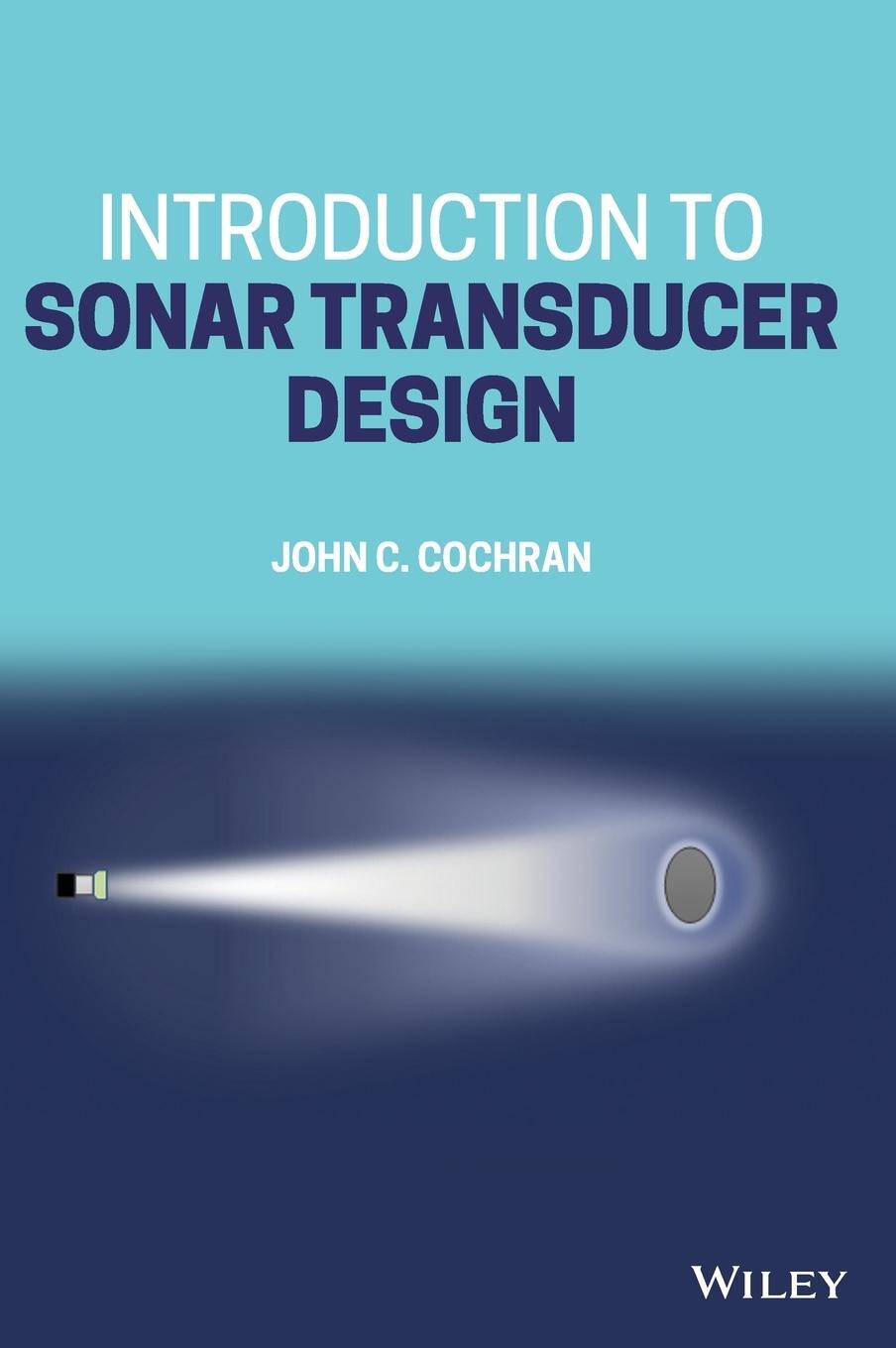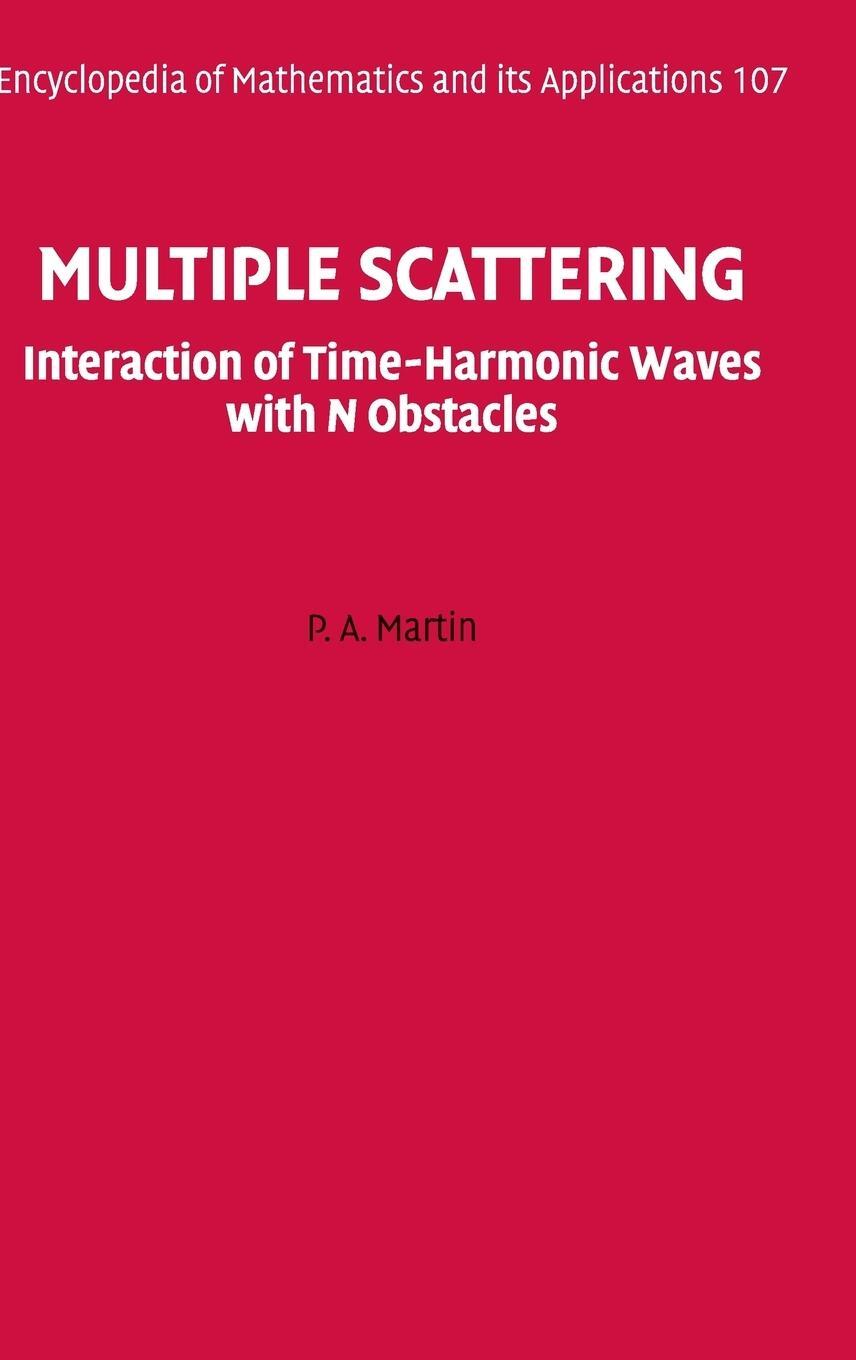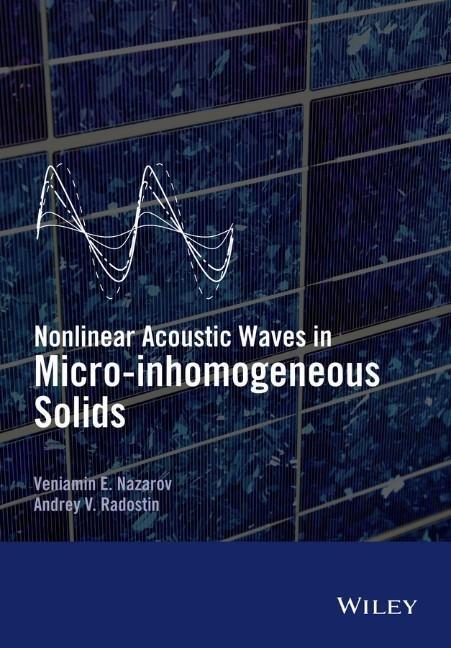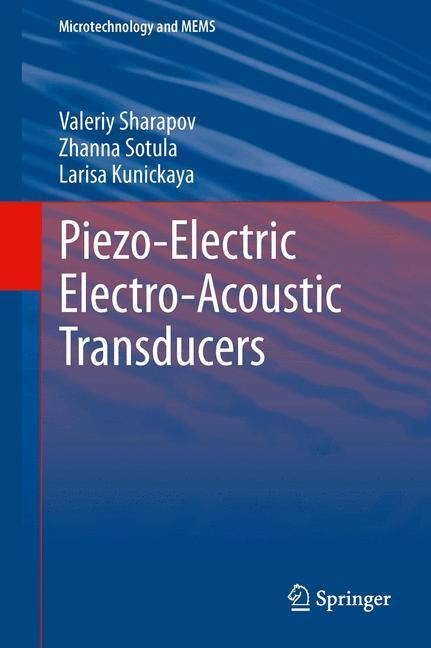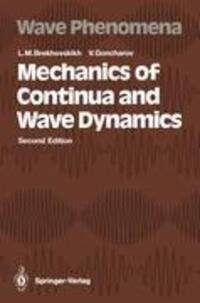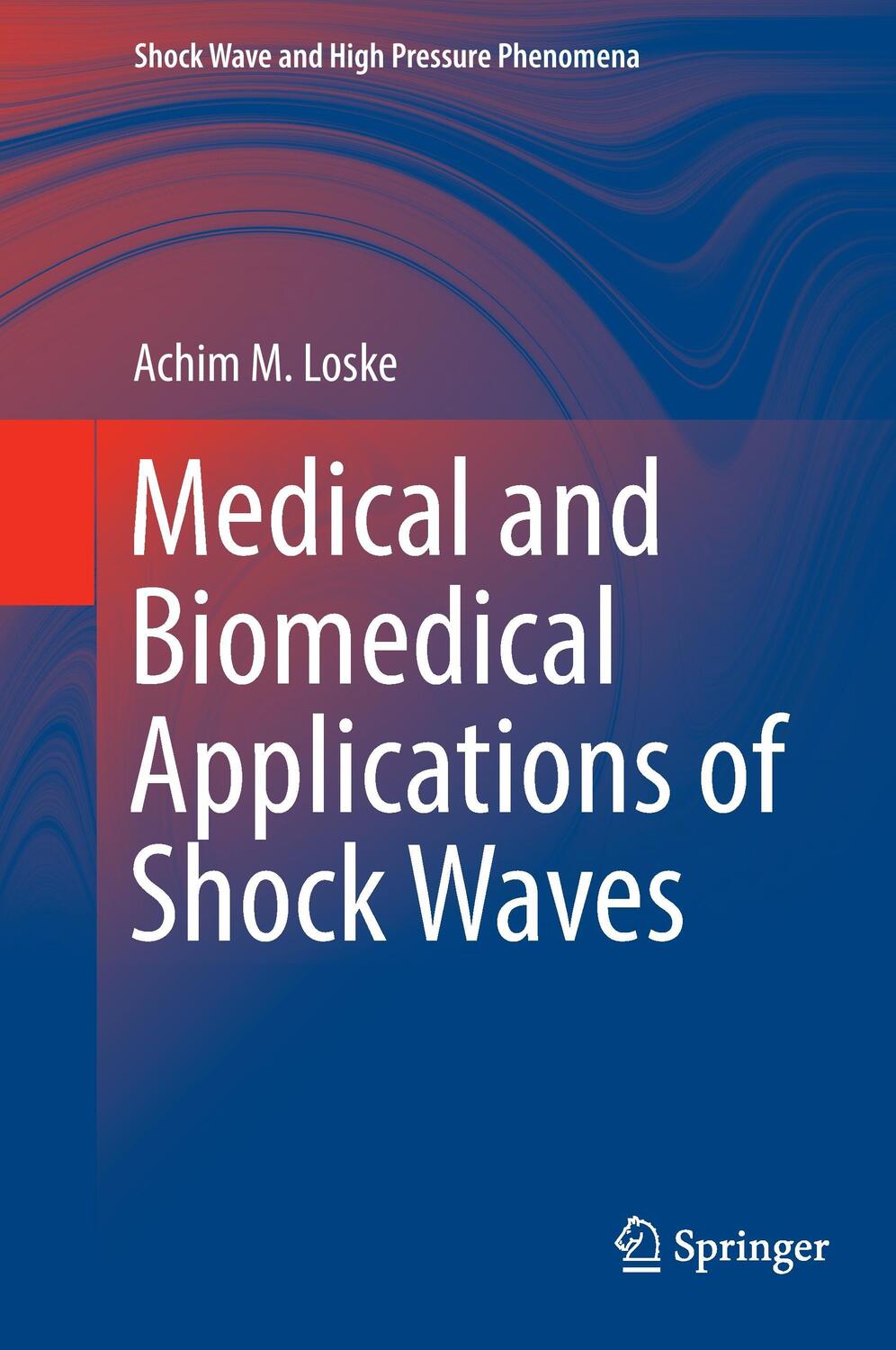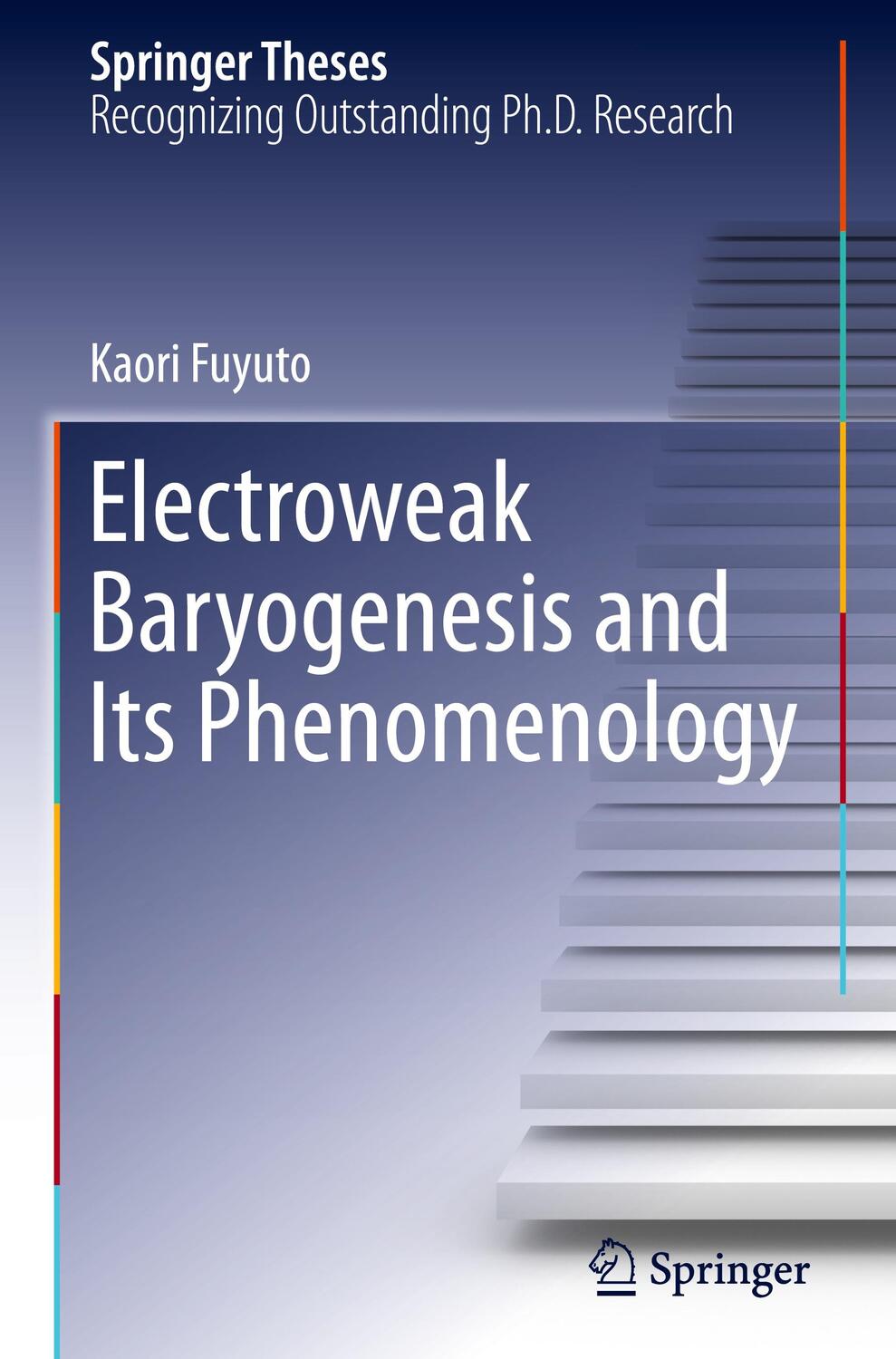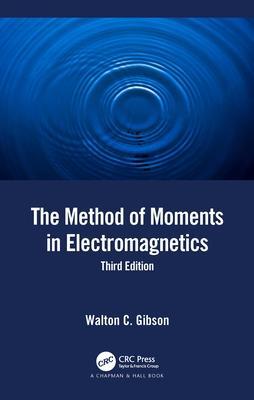173,50 €*
Versandkostenfrei per Post / DHL
Aktuell nicht verfügbar
A comprehensive introduction to sonar transducer design, complete with real world examples, step-by-step instruction, and detailed mathematical review
In Introduction to Sonar Transducer Design, renowned sensor engineer Dr. John C. Cochran delivers an instructive and comprehensive exploration of the foundations of sonar transducer design perfect for beginning and experienced professional transducer designers. The book offers a detailed mathematical review of the subject, as well as fulsome design examples.
Beginning with a description of acoustic wave propagation, along with a review of radiation from a variety of sources, the book moves on to discuss equivalent circuit models that explain wave propagation in solids and liquids. The book reviews examples of projectors and hydrophones accompanied by complete mathematical solutions. All included math is developed from first principles to a final solution using an intuitive, step-by-step approach.
Introduction to Sonar Transducer Design offers professionals and students the analytical tools and assumptions required for start-to-finish transducer design. It also provides:
* A thorough introduction to acoustic waves and radiation, including small signals, linear acoustics, the equations of continuity, motion, the wave equation in a fluid media, and integral formulations
* Comprehensive explorations of the elements of transduction, including various forms of impedance, and mechanical and acoustical equivalent circuits, as well as their combination
* Practical discussions of waves in solid media, including homogeneous, isotropic, elastic, and solid media, piezoelectricity and piezoelectric ceramic materials, and waves in non-homogeneous, piezoelectric media
* In-depth examinations of sonar projectors and sonar hydrophones, including the elements and tools of sonar projector and sonar hydrophone design, as well as their applications
Perfect for sonar system engineers, particularly those involved in defense, Introduction to Sonar Transducer Design will also earn a place in the libraries of acoustic, audio, underwater communication, and naval engineers.
A comprehensive introduction to sonar transducer design, complete with real world examples, step-by-step instruction, and detailed mathematical review
In Introduction to Sonar Transducer Design, renowned sensor engineer Dr. John C. Cochran delivers an instructive and comprehensive exploration of the foundations of sonar transducer design perfect for beginning and experienced professional transducer designers. The book offers a detailed mathematical review of the subject, as well as fulsome design examples.
Beginning with a description of acoustic wave propagation, along with a review of radiation from a variety of sources, the book moves on to discuss equivalent circuit models that explain wave propagation in solids and liquids. The book reviews examples of projectors and hydrophones accompanied by complete mathematical solutions. All included math is developed from first principles to a final solution using an intuitive, step-by-step approach.
Introduction to Sonar Transducer Design offers professionals and students the analytical tools and assumptions required for start-to-finish transducer design. It also provides:
* A thorough introduction to acoustic waves and radiation, including small signals, linear acoustics, the equations of continuity, motion, the wave equation in a fluid media, and integral formulations
* Comprehensive explorations of the elements of transduction, including various forms of impedance, and mechanical and acoustical equivalent circuits, as well as their combination
* Practical discussions of waves in solid media, including homogeneous, isotropic, elastic, and solid media, piezoelectricity and piezoelectric ceramic materials, and waves in non-homogeneous, piezoelectric media
* In-depth examinations of sonar projectors and sonar hydrophones, including the elements and tools of sonar projector and sonar hydrophone design, as well as their applications
Perfect for sonar system engineers, particularly those involved in defense, Introduction to Sonar Transducer Design will also earn a place in the libraries of acoustic, audio, underwater communication, and naval engineers.
John C. Cochran, PhD, is a former Principal Engineering Fellow in the Advanced Technology Department of Raytheon Integrated Defense Systems responsible for sonar system design and operation. He is a subject matter expert in the design and development of advanced sensors, sensor arrays, and undersea sensing systems.
1 Acoustic Waves and Radiation 1
1.1 Small Signals/Linear Acoustics 1
1.1.1 Compressibility 2
1.1.2 Small Signals/Linear Acoustics 2
1.1.3 Relationship Between Acoustic Pressure and Acoustic Density 2
1.1.4 Condensation 2
1.1.5 Time Derivative Using Eulerian and Lagrangian Description 3
1.2 The Equations of Continuity, Motion, and the Wave Equation in a Fluid Media 3
1.2.1 Equation of Continuity in a Single Dimension 3
1.2.2 The Force Equation in a Single Dimension 4
1.2.3 The Wave Equation in a Single Dimension 5
1.2.4 Generalization of the Wave Equation to Three Dimensions 5
1.2.5 Helmholtz Wave Equation 6
1.2.6 Velocity Potential 6
1.3 Plane Waves 7
1.3.1 Harmonic Plane Waves 7
1.3.2 Plane Waves in an Infinite Media 7
1.3.3 Plane Wave Acoustic Intensity 8
1.3.4 Plane Wave Acoustic Impedance 8
1.4 Radiation from Spheres 8
1.4.1 General Solution to Radiation from Spheres 9
1.4.2 Spherical Wave Acoustic Impedance 11
1.4.3 Axis-Symmetric Radiation from a Sphere - the Spherical Source 11
1.4.4 The Simple Spherical Source 12
1.4.5 Source Strength 12
1.4.6 The General Simple Source 13
1.4.7 Acoustic Reciprocity and Reciprocity Factor 13
1.5 Radiation from Sources on a Cylindrical Surface 14
1.5.1 General Solution to Radiation from Cylinders 15
1.5.2 Radiation from an Infinitely Long Cylinder 18
1.5.3 The Simple, Infinitely Long Cylindrical Source 19
1.5.4 Radiation from an Infinitely Long Strip on an Infinitely Long Cylinder 20
1.5.5 Radiation from a Finite Source on a Cylinder with a Periodic z Dependence 21
1.5.6 Radiation from a Finite Source on a Cylinder with a Uniform z Dependence 22
1.5.7 The Simple Cylindrical Source - Radiation from a Finite Length Cylinder in an Infinitely Long Cylinder Baffle 25
1.6 Integral Formulations 26
1.6.1 The Green's Function 27
1.6.2 Helmholtz Integral Formulations 28
1.6.3 Far Field Approximation 29
1.6.4 An Application of the Simple Source Integral Formulation - Radiation from a Finite Cylinder 34
1.7 Linear Apertures 36
1.7.1 Far Field Radiation (Beam) Patterns as a Fourier Transform of the Linear Aperture Function - the Directivity Function 36
1.7.2 A Simple Rectangular Aperture Function as an Example of a Linear Aperture 38
1.7.3 The Triangular Window Aperture Function as a Linear Aperture 41
1.7.4 The Cosine Window Aperture Function as a Linear Aperture 43
1.7.5 Other Linear Apertures 45
1.7.6 The Far Field Radiation Pattern of a Linear Aperture on a Cylindrical Surface 45
1.8 Planar Apertures 49
1.8.1 The Green's Function for Radiation from Planar Apertures Located on a Rigid Plane Baffle 49
1.8.2 Far Field Radiation Patterns as a Fourier Transform of the Planar Aperture Function 50
1.8.3 The Rectangular Piston in an Infinite Plane Baffle 52
1.8.4 The Circular Piston in an Infinite Plane Baffle 54
1.8.5 The Far Field Radiation Pattern of a Circular Annular Ring 59
1.8.6 The Elliptical Piston in an Infinite Plane Baffle 60
1.8.7 Impact of Boundary Impedance on Radiation Patterns from Planar Apertures 60
1.9 Directivity and Directivity Index (DI) 63
1.9.1 Definition of Directivity and Directivity Index (DI) 65
1.9.2 Relationship Between Source Level and Directivity Index 67
1.9.3 The Directivity of Baffled vs. Unbaffled Sources 68
1.9.4 The Directivity Index of a Baffled Circular Piston 68
1.9.5 The Directivity Index of a Baffled Rectangular Piston 70
1.9.6 The Directivity Index of a Line Source 70
1.10 Scattering and Diffraction 72
1.10.1 Scattering and Diffraction from a Rigid Cylinder 72
1.10.1.1 The Incident Wave 72
1.10.1.2 The Scattered Wave 73
1.10.1.3 Matching the Boundary Conditions for the Total Field 73
1.10.1.4 The Scattered Pressure Field in the Far Field 74
1.10.1.5 The Total Pressure Field 74
1.10.1.6 The Average Pressure Exerted on the Cylinder by the Total Pressure Field 74
1.10.2 The Diffraction Constant for a Rigid Cylinder 76
1.10.3 Diffraction Constant for a Strip on a Rigid Cylinder 76
1.10.4 Diffraction of a Cylinder with Variable Boundary Admittance 77
1.10.4.1 The Incident Wave 77
1.10.4.2 The Boundary Admittance 78
1.10.4.3 The Scattered Wave 78
1.10.4.4 Matching the Boundary Conditions 81
1.10.4.5 The Boundary Reflection Coefficient and the Scattered Field 81
1.10.4.6 The Total Field 82
1.10.4.7 The Average Pressure Exerted on the Cylinder With a Variable Boundary Admittance 82
1.10.4.8 The Diffraction Constant for a Cylinder with Variable Boundary Admittance 82
1.10.4.9 The Total Diffracted Field in the Far Field 83
1.10.4.10 The Total Diffracted Field at the Surface of the Cylinder 83
1.10.5 Scattering and Diffraction from a Rigid Sphere 84
1.10.5.1 The Incident Wave 84
1.10.5.2 The Scattered Wave 85
1.10.5.3 Matching the Boundary Conditions for the Total Field 85
1.10.5.4 The Total Pressure Field 85
1.10.5.5 The Scattered Pressure Field in the Far Field 86
1.10.5.6 The Average Pressure Exerted on the Sphere by the Pressure Field 86
1.10.6 The Diffraction Constant for a Rigid Sphere 87
1.10.7 Scattering and Diffraction from a Thin Cylindrical Ring 87
1.11 Radiation Impedance 89
1.11.1 Introduction to Radiation Impedance 89
1.11.2 Units of Acoustic Radiation Impedance 90
1.11.3 What it Means to be rhoc Loaded 90
1.11.4 The Relationship Between Resistance and Reactance - The Hilbert Transform 90
1.11.5 The Relationship Between Radiation Resistance, Directivity, and Diffraction Constant 92
1.11.6 The Radiation Impedance of a Spherical Radiator 94
1.11.7 The Radiation Impedance of a Simple Source Radiator 95
1.11.8 The Radiation Impedance of a Circular Piston Radiator in a Plane Baffle 95
1.11.9 The Radiation Impedance of a Circular Piston Radiator at the End of a Tube 97
1.11.10 The Radiation Impedance of a Rectangular Piston Radiator in a Plane Baffle 98
1.11.11 The Radiation Impedance of an Infinitely Long Strip Radiator in a Plane Baffle 100
1.11.12 The Radiation Impedance of a Circular Annular Piston Radiator in a Plane Baffle 101
1.11.13 The Radiation Impedance of an Elliptical Piston Radiator in a Plane Baffle 103
1.11.14 The Radiation Impedance of an Infinitely Long Cylindrical Radiator 103
1.11.15 The Radiation Impedance of a Finite Cylindrical Radiator 104
1.11.16 Mutual Radiation Impedance 105
1.11.17 The Mutual Radiation Impedance Between Spherical Radiators 106
1.11.18 The Mutual Radiation Impedance Between Two Circular Piston Radiators in a Plane Baffle 108
1.11.19 The Mutual Radiation Impedance Between Two Square Piston Radiators in a Plane Baffle 114
1.11.20 The Mutual Radiation Impedance Between a Circular Piston and an Outer Annular Ring 116
1.11.21 The Mutual Radiation Impedance Between Rectangular or Square Pistons Located on a Cylindrical Baffle 118
1.11.22 The Mutual Radiation Impedance Between Bands on a Cylindrical Baffle 124
1.12 Transmission Phenomena 125
1.12.1 Reflection and Transmission of Plane Waves with Normal Incidence at a Boundary 126
1.12.2 Reflection and Transmission of Plane Waves Obliquely Incident at a Plane Boundary 129
1.12.2.1 Snell's Law 130
1.12.2.2 Reflection and Transmission Factors for Obliquely Incident Plane Waves 131
1.12.2.3 Brewster's Angle or the Angle of Zero Reflection 131
1.12.2.4 The Critical Angle or the Angle of Complete Reflection 132
1.12.2.5 Evanescent Waves 132
1.13 Absorption and Attenuation of Sound 133
1.13.1 Absorption Phenomena 133
1.13.2 Absorption in Seawater 134
References 135
2 Mechanical/Acoustical Equivalent Circuits 137
2.1 Different Forms of Impedance 138
2.2 Mechanical Equivalent Circuits 139
2.2.1 The Simple Mechanical System 139
2.2.1.1 A Simple Mechanical Oscillator 139
2.2.1.2 Phasor Form of the Solutions to the Equations of Motion 139
2.2.1.3 Damped Oscillations 140
2.2.1.4 Forced Oscillations 141
2.2.1.5 Complete Solution for a Simple Oscillator 142
2.2.1.6 Analogy to Electrical Circuits 142
2.2.1.7 Behavior of the Steady State, Forced, Mechanical Oscillator 143
2.2.1.8 Equivalent Circuit for a Simple Resonator System 144
2.2.2 Introduction to Mobility 145
2.2.2.1 Mechanical Generators 145
2.2.2.2 Combining Impedance and Mobility Elements 145
2.2.2.3 Elements of Mobility and Impedance Analogs 147
2.2.2.4 Examples of Mechanical Systems Described by Mobility Analogs 149
2.2.2.5 An Example of a Gyrator Conversion 150
2.2.2.6 Converting from Mobility to Impedance and Vice Versa 151
2.3 Acoustical Equivalent Circuits 153
2.3.1 Acoustic Circuit Elements 153
2.3.1.1 Acoustic Compliance - the Closed-End Tube 153
2.3.1.2 Acoustic Mass - the Open-Ended Tube 154
2.3.1.3 Acoustic Resistance 156
2.3.1.4 Acoustic Generators 156
2.3.1.5 Pressure Equalization Orifices 156
2.3.1.6 The Thin Acoustic Orifice 159
2.3.1.7 The Narrow Slit 160
2.3.1.8 The Acoustic Mesh or Perforated Sheet 160
2.3.2 Acoustic Equivalent Circuits 161
2.3.2.1 Example of an Acoustic System Described by an Equivalent Circuit 161
2.3.2.2 Another Example of an Acoustic Equivalent Circuit - the Helmholtz Resonator 161
2.4 Combining Mechanical and Acoustical Equivalent Circuits 163
2.5 Introduction to Transduction 165
2.5.1 The Transducer as a Two-Port Equivalent Circuit 165
2.5.2 Reciprocal and Anti-Reciprocal Transducers 166
2.5.3 The Electromechanical Coupling Factor 166
2.5.4 Electromechanical Transformation 167
2.5.5 Transmitters 167
2.5.6 Receivers 169
2.5.7 Relationship Between Transmit and Receive Characteristics 170
References 171
3 Waves in Solid Media 173
3.1 Waves in Homogeneous, Isotropic, Elastic, Solid Media 173
3.1.1 The Components of Stress 173
3.1.2 The Equations of Motion 174
3.1.3 The Components of Strain 175
3.1.4 The Relationship Between Stress and Strain - The Constitutive Equations 177
3.1.4.1 Hooke's Law - Tensor Form 177
3.1.4.2 Hooke's Law - Matrix Form 179
3.1.4.3 The Differences Between Tensor and Matrix Forms of the Constitutive Equations 180
3.1.4.4 Lame's Constants 182
3.1.4.5 Stiffness vs....
| Erscheinungsjahr: | 2022 |
|---|---|
| Fachbereich: | Astronomie |
| Genre: | Physik |
| Rubrik: | Naturwissenschaften & Technik |
| Medium: | Buch |
| Seiten: | 544 |
| Inhalt: | 544 S. |
| ISBN-13: | 9781119851059 |
| ISBN-10: | 111985105X |
| Sprache: | Englisch |
| Einband: | Gebunden |
| Autor: | Cochran |
| Hersteller: | Wiley |
| Maße: | 260 x 183 x 33 mm |
| Von/Mit: | Cochran |
| Erscheinungsdatum: | 03.05.2022 |
| Gewicht: | 1,204 kg |
John C. Cochran, PhD, is a former Principal Engineering Fellow in the Advanced Technology Department of Raytheon Integrated Defense Systems responsible for sonar system design and operation. He is a subject matter expert in the design and development of advanced sensors, sensor arrays, and undersea sensing systems.
1 Acoustic Waves and Radiation 1
1.1 Small Signals/Linear Acoustics 1
1.1.1 Compressibility 2
1.1.2 Small Signals/Linear Acoustics 2
1.1.3 Relationship Between Acoustic Pressure and Acoustic Density 2
1.1.4 Condensation 2
1.1.5 Time Derivative Using Eulerian and Lagrangian Description 3
1.2 The Equations of Continuity, Motion, and the Wave Equation in a Fluid Media 3
1.2.1 Equation of Continuity in a Single Dimension 3
1.2.2 The Force Equation in a Single Dimension 4
1.2.3 The Wave Equation in a Single Dimension 5
1.2.4 Generalization of the Wave Equation to Three Dimensions 5
1.2.5 Helmholtz Wave Equation 6
1.2.6 Velocity Potential 6
1.3 Plane Waves 7
1.3.1 Harmonic Plane Waves 7
1.3.2 Plane Waves in an Infinite Media 7
1.3.3 Plane Wave Acoustic Intensity 8
1.3.4 Plane Wave Acoustic Impedance 8
1.4 Radiation from Spheres 8
1.4.1 General Solution to Radiation from Spheres 9
1.4.2 Spherical Wave Acoustic Impedance 11
1.4.3 Axis-Symmetric Radiation from a Sphere - the Spherical Source 11
1.4.4 The Simple Spherical Source 12
1.4.5 Source Strength 12
1.4.6 The General Simple Source 13
1.4.7 Acoustic Reciprocity and Reciprocity Factor 13
1.5 Radiation from Sources on a Cylindrical Surface 14
1.5.1 General Solution to Radiation from Cylinders 15
1.5.2 Radiation from an Infinitely Long Cylinder 18
1.5.3 The Simple, Infinitely Long Cylindrical Source 19
1.5.4 Radiation from an Infinitely Long Strip on an Infinitely Long Cylinder 20
1.5.5 Radiation from a Finite Source on a Cylinder with a Periodic z Dependence 21
1.5.6 Radiation from a Finite Source on a Cylinder with a Uniform z Dependence 22
1.5.7 The Simple Cylindrical Source - Radiation from a Finite Length Cylinder in an Infinitely Long Cylinder Baffle 25
1.6 Integral Formulations 26
1.6.1 The Green's Function 27
1.6.2 Helmholtz Integral Formulations 28
1.6.3 Far Field Approximation 29
1.6.4 An Application of the Simple Source Integral Formulation - Radiation from a Finite Cylinder 34
1.7 Linear Apertures 36
1.7.1 Far Field Radiation (Beam) Patterns as a Fourier Transform of the Linear Aperture Function - the Directivity Function 36
1.7.2 A Simple Rectangular Aperture Function as an Example of a Linear Aperture 38
1.7.3 The Triangular Window Aperture Function as a Linear Aperture 41
1.7.4 The Cosine Window Aperture Function as a Linear Aperture 43
1.7.5 Other Linear Apertures 45
1.7.6 The Far Field Radiation Pattern of a Linear Aperture on a Cylindrical Surface 45
1.8 Planar Apertures 49
1.8.1 The Green's Function for Radiation from Planar Apertures Located on a Rigid Plane Baffle 49
1.8.2 Far Field Radiation Patterns as a Fourier Transform of the Planar Aperture Function 50
1.8.3 The Rectangular Piston in an Infinite Plane Baffle 52
1.8.4 The Circular Piston in an Infinite Plane Baffle 54
1.8.5 The Far Field Radiation Pattern of a Circular Annular Ring 59
1.8.6 The Elliptical Piston in an Infinite Plane Baffle 60
1.8.7 Impact of Boundary Impedance on Radiation Patterns from Planar Apertures 60
1.9 Directivity and Directivity Index (DI) 63
1.9.1 Definition of Directivity and Directivity Index (DI) 65
1.9.2 Relationship Between Source Level and Directivity Index 67
1.9.3 The Directivity of Baffled vs. Unbaffled Sources 68
1.9.4 The Directivity Index of a Baffled Circular Piston 68
1.9.5 The Directivity Index of a Baffled Rectangular Piston 70
1.9.6 The Directivity Index of a Line Source 70
1.10 Scattering and Diffraction 72
1.10.1 Scattering and Diffraction from a Rigid Cylinder 72
1.10.1.1 The Incident Wave 72
1.10.1.2 The Scattered Wave 73
1.10.1.3 Matching the Boundary Conditions for the Total Field 73
1.10.1.4 The Scattered Pressure Field in the Far Field 74
1.10.1.5 The Total Pressure Field 74
1.10.1.6 The Average Pressure Exerted on the Cylinder by the Total Pressure Field 74
1.10.2 The Diffraction Constant for a Rigid Cylinder 76
1.10.3 Diffraction Constant for a Strip on a Rigid Cylinder 76
1.10.4 Diffraction of a Cylinder with Variable Boundary Admittance 77
1.10.4.1 The Incident Wave 77
1.10.4.2 The Boundary Admittance 78
1.10.4.3 The Scattered Wave 78
1.10.4.4 Matching the Boundary Conditions 81
1.10.4.5 The Boundary Reflection Coefficient and the Scattered Field 81
1.10.4.6 The Total Field 82
1.10.4.7 The Average Pressure Exerted on the Cylinder With a Variable Boundary Admittance 82
1.10.4.8 The Diffraction Constant for a Cylinder with Variable Boundary Admittance 82
1.10.4.9 The Total Diffracted Field in the Far Field 83
1.10.4.10 The Total Diffracted Field at the Surface of the Cylinder 83
1.10.5 Scattering and Diffraction from a Rigid Sphere 84
1.10.5.1 The Incident Wave 84
1.10.5.2 The Scattered Wave 85
1.10.5.3 Matching the Boundary Conditions for the Total Field 85
1.10.5.4 The Total Pressure Field 85
1.10.5.5 The Scattered Pressure Field in the Far Field 86
1.10.5.6 The Average Pressure Exerted on the Sphere by the Pressure Field 86
1.10.6 The Diffraction Constant for a Rigid Sphere 87
1.10.7 Scattering and Diffraction from a Thin Cylindrical Ring 87
1.11 Radiation Impedance 89
1.11.1 Introduction to Radiation Impedance 89
1.11.2 Units of Acoustic Radiation Impedance 90
1.11.3 What it Means to be rhoc Loaded 90
1.11.4 The Relationship Between Resistance and Reactance - The Hilbert Transform 90
1.11.5 The Relationship Between Radiation Resistance, Directivity, and Diffraction Constant 92
1.11.6 The Radiation Impedance of a Spherical Radiator 94
1.11.7 The Radiation Impedance of a Simple Source Radiator 95
1.11.8 The Radiation Impedance of a Circular Piston Radiator in a Plane Baffle 95
1.11.9 The Radiation Impedance of a Circular Piston Radiator at the End of a Tube 97
1.11.10 The Radiation Impedance of a Rectangular Piston Radiator in a Plane Baffle 98
1.11.11 The Radiation Impedance of an Infinitely Long Strip Radiator in a Plane Baffle 100
1.11.12 The Radiation Impedance of a Circular Annular Piston Radiator in a Plane Baffle 101
1.11.13 The Radiation Impedance of an Elliptical Piston Radiator in a Plane Baffle 103
1.11.14 The Radiation Impedance of an Infinitely Long Cylindrical Radiator 103
1.11.15 The Radiation Impedance of a Finite Cylindrical Radiator 104
1.11.16 Mutual Radiation Impedance 105
1.11.17 The Mutual Radiation Impedance Between Spherical Radiators 106
1.11.18 The Mutual Radiation Impedance Between Two Circular Piston Radiators in a Plane Baffle 108
1.11.19 The Mutual Radiation Impedance Between Two Square Piston Radiators in a Plane Baffle 114
1.11.20 The Mutual Radiation Impedance Between a Circular Piston and an Outer Annular Ring 116
1.11.21 The Mutual Radiation Impedance Between Rectangular or Square Pistons Located on a Cylindrical Baffle 118
1.11.22 The Mutual Radiation Impedance Between Bands on a Cylindrical Baffle 124
1.12 Transmission Phenomena 125
1.12.1 Reflection and Transmission of Plane Waves with Normal Incidence at a Boundary 126
1.12.2 Reflection and Transmission of Plane Waves Obliquely Incident at a Plane Boundary 129
1.12.2.1 Snell's Law 130
1.12.2.2 Reflection and Transmission Factors for Obliquely Incident Plane Waves 131
1.12.2.3 Brewster's Angle or the Angle of Zero Reflection 131
1.12.2.4 The Critical Angle or the Angle of Complete Reflection 132
1.12.2.5 Evanescent Waves 132
1.13 Absorption and Attenuation of Sound 133
1.13.1 Absorption Phenomena 133
1.13.2 Absorption in Seawater 134
References 135
2 Mechanical/Acoustical Equivalent Circuits 137
2.1 Different Forms of Impedance 138
2.2 Mechanical Equivalent Circuits 139
2.2.1 The Simple Mechanical System 139
2.2.1.1 A Simple Mechanical Oscillator 139
2.2.1.2 Phasor Form of the Solutions to the Equations of Motion 139
2.2.1.3 Damped Oscillations 140
2.2.1.4 Forced Oscillations 141
2.2.1.5 Complete Solution for a Simple Oscillator 142
2.2.1.6 Analogy to Electrical Circuits 142
2.2.1.7 Behavior of the Steady State, Forced, Mechanical Oscillator 143
2.2.1.8 Equivalent Circuit for a Simple Resonator System 144
2.2.2 Introduction to Mobility 145
2.2.2.1 Mechanical Generators 145
2.2.2.2 Combining Impedance and Mobility Elements 145
2.2.2.3 Elements of Mobility and Impedance Analogs 147
2.2.2.4 Examples of Mechanical Systems Described by Mobility Analogs 149
2.2.2.5 An Example of a Gyrator Conversion 150
2.2.2.6 Converting from Mobility to Impedance and Vice Versa 151
2.3 Acoustical Equivalent Circuits 153
2.3.1 Acoustic Circuit Elements 153
2.3.1.1 Acoustic Compliance - the Closed-End Tube 153
2.3.1.2 Acoustic Mass - the Open-Ended Tube 154
2.3.1.3 Acoustic Resistance 156
2.3.1.4 Acoustic Generators 156
2.3.1.5 Pressure Equalization Orifices 156
2.3.1.6 The Thin Acoustic Orifice 159
2.3.1.7 The Narrow Slit 160
2.3.1.8 The Acoustic Mesh or Perforated Sheet 160
2.3.2 Acoustic Equivalent Circuits 161
2.3.2.1 Example of an Acoustic System Described by an Equivalent Circuit 161
2.3.2.2 Another Example of an Acoustic Equivalent Circuit - the Helmholtz Resonator 161
2.4 Combining Mechanical and Acoustical Equivalent Circuits 163
2.5 Introduction to Transduction 165
2.5.1 The Transducer as a Two-Port Equivalent Circuit 165
2.5.2 Reciprocal and Anti-Reciprocal Transducers 166
2.5.3 The Electromechanical Coupling Factor 166
2.5.4 Electromechanical Transformation 167
2.5.5 Transmitters 167
2.5.6 Receivers 169
2.5.7 Relationship Between Transmit and Receive Characteristics 170
References 171
3 Waves in Solid Media 173
3.1 Waves in Homogeneous, Isotropic, Elastic, Solid Media 173
3.1.1 The Components of Stress 173
3.1.2 The Equations of Motion 174
3.1.3 The Components of Strain 175
3.1.4 The Relationship Between Stress and Strain - The Constitutive Equations 177
3.1.4.1 Hooke's Law - Tensor Form 177
3.1.4.2 Hooke's Law - Matrix Form 179
3.1.4.3 The Differences Between Tensor and Matrix Forms of the Constitutive Equations 180
3.1.4.4 Lame's Constants 182
3.1.4.5 Stiffness vs....
| Erscheinungsjahr: | 2022 |
|---|---|
| Fachbereich: | Astronomie |
| Genre: | Physik |
| Rubrik: | Naturwissenschaften & Technik |
| Medium: | Buch |
| Seiten: | 544 |
| Inhalt: | 544 S. |
| ISBN-13: | 9781119851059 |
| ISBN-10: | 111985105X |
| Sprache: | Englisch |
| Einband: | Gebunden |
| Autor: | Cochran |
| Hersteller: | Wiley |
| Maße: | 260 x 183 x 33 mm |
| Von/Mit: | Cochran |
| Erscheinungsdatum: | 03.05.2022 |
| Gewicht: | 1,204 kg |

